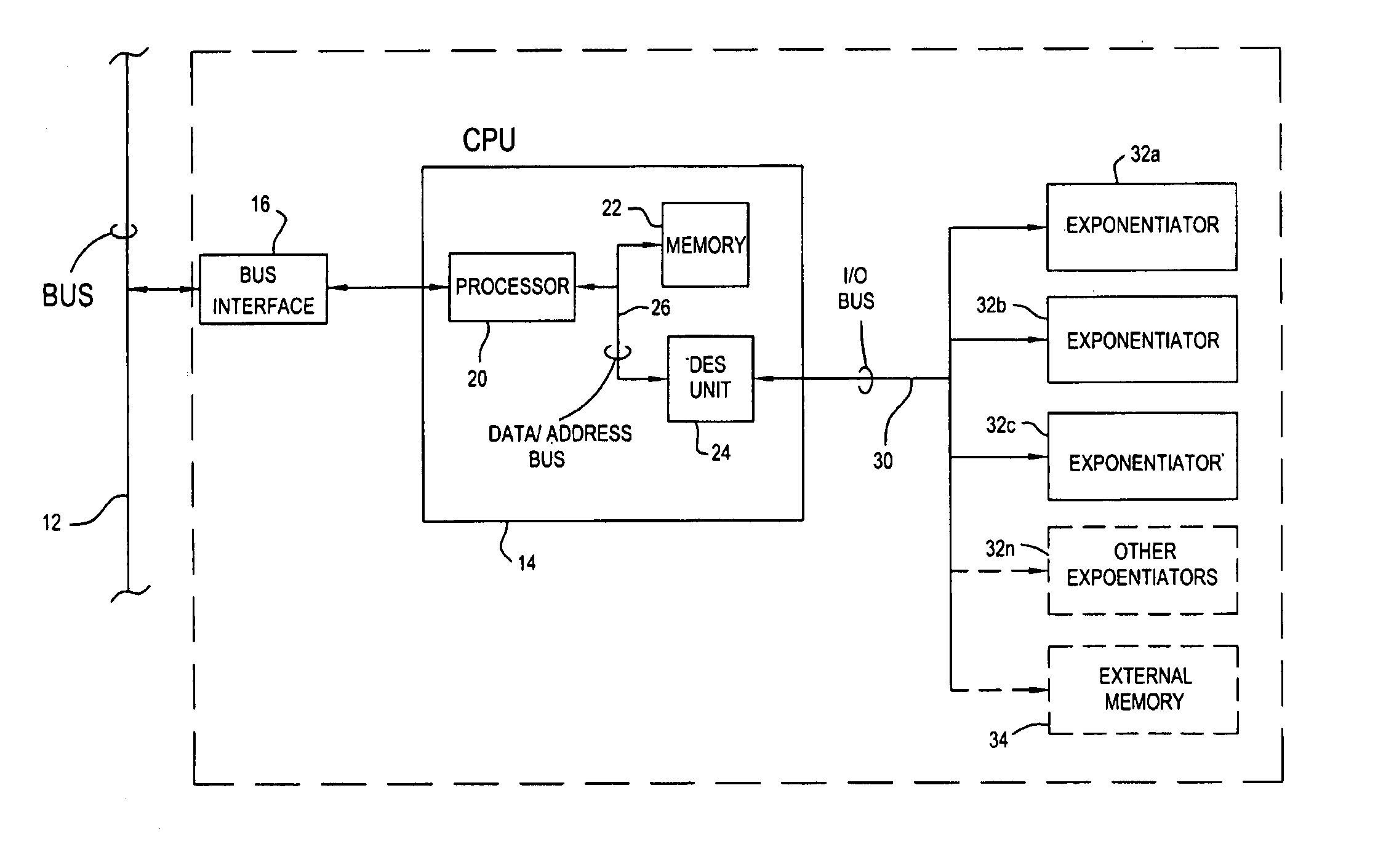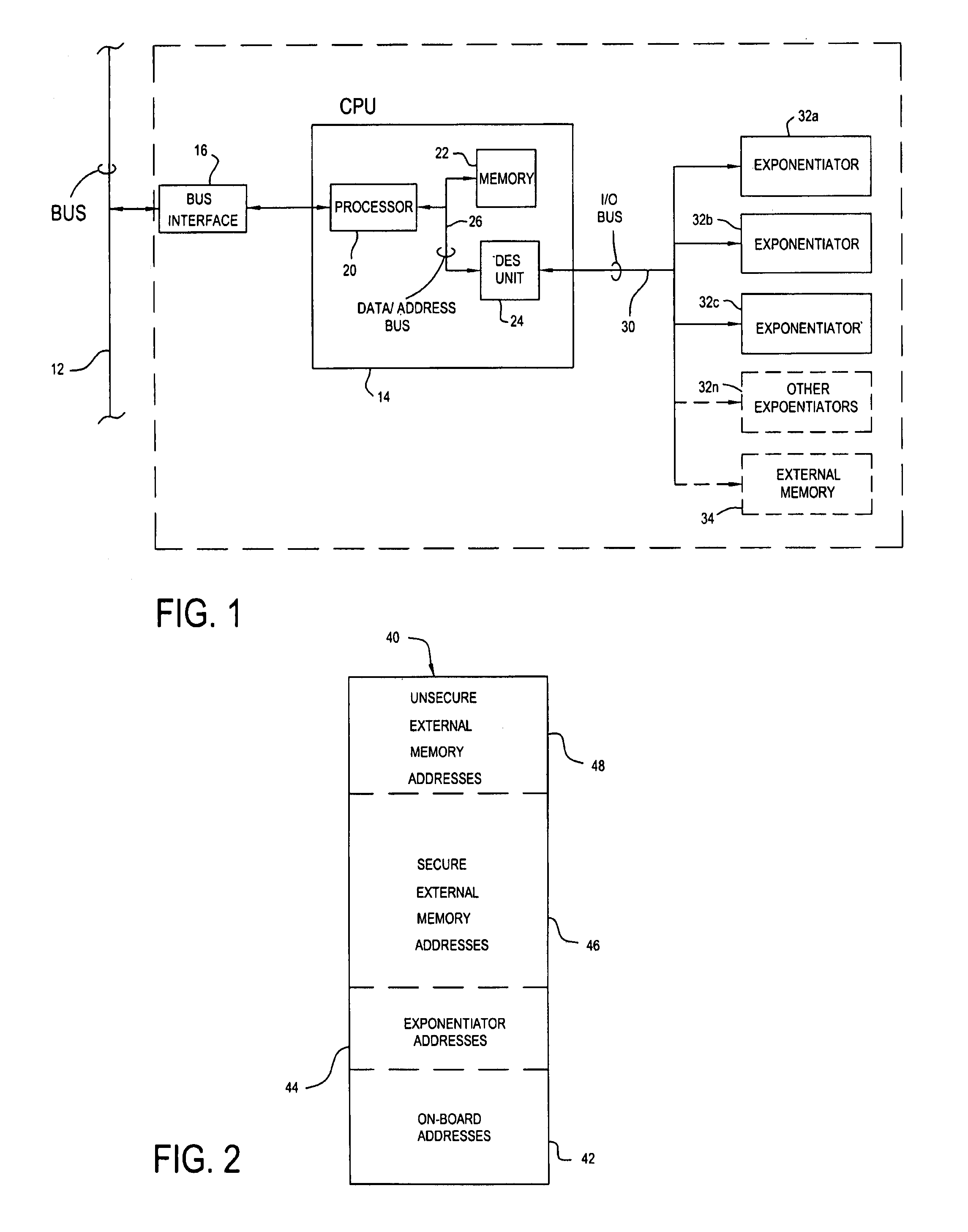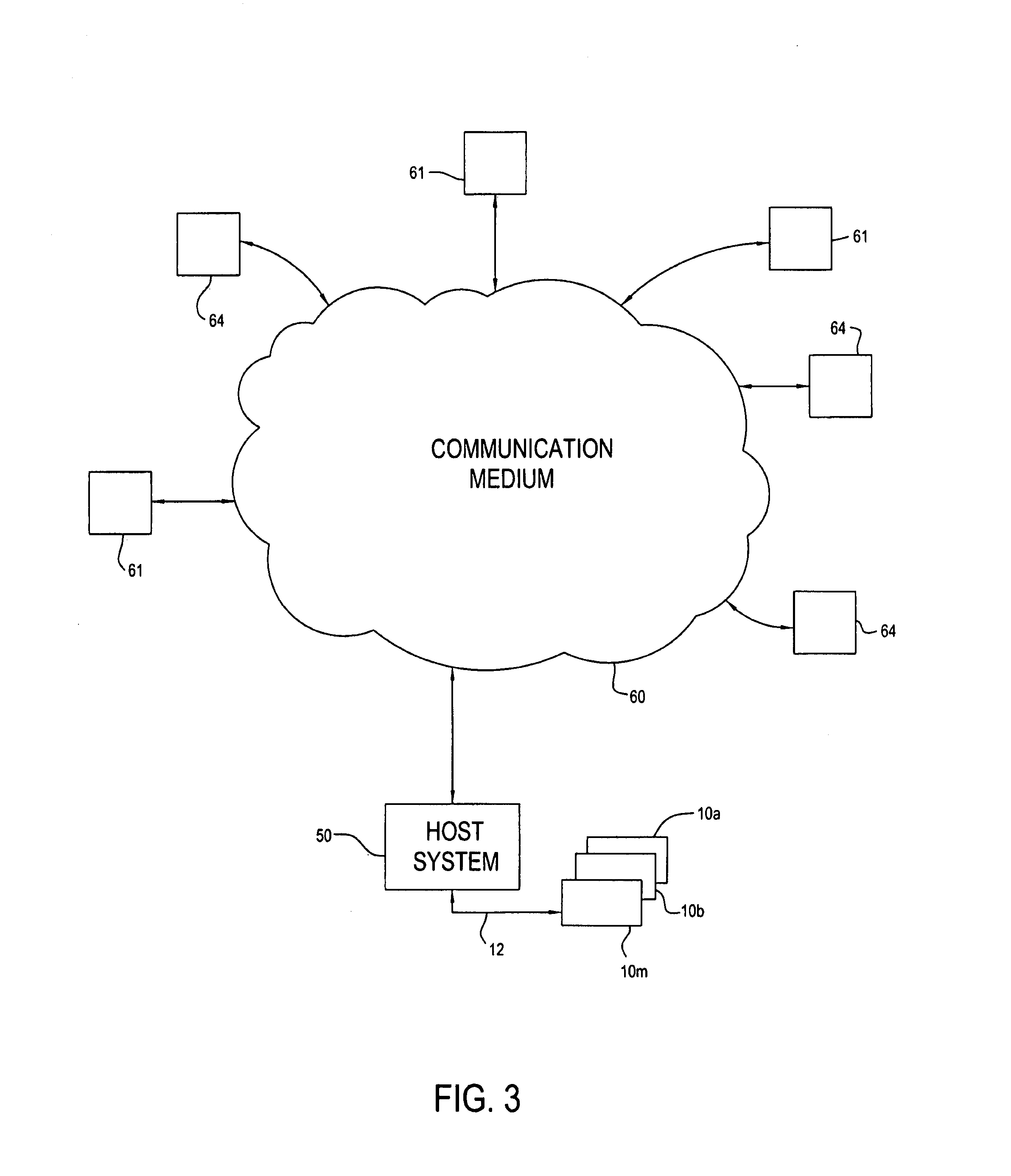Multiprime RSA public key cryptosystem
- Summary
- Abstract
- Description
- Claims
- Application Information
AI Technical Summary
Benefits of technology
Problems solved by technology
Method used
Image
Examples
Embodiment Construction
[0031]As indicated above, the present invention is employed in the context of the RSA public key encryption / decryption scheme. As also indicated, the RSA scheme obtains its security from the difficulty of factoring large numbers, and the fact that the public and private keys are functions of a pair of large (100–200 digits or even larger) prime numbers. Recovering the plaintext from the public key and the ciphertext is conjectured to be equivalent to factoring the product of two primes.
[0032]According to the present invention, the public key portion e is picked. Then, three or more random large, distinct prime numbers, p1, p2, . . . , pk are developed and checked to ensure that each of (p1−1), (p2−1), . . . , (pk−1) is relatively prime to e. Preferably, the prime numbers are of equal length. Then, the product n=p1·p2· . . . ·pk is computed.
[0033]Finally, the decryption exponent, d, is established by the relationship:
d≡e−1 mod ((p1−1) (p2−1) . . . (pk−1)).
[0034]The message data, M is...
PUM
 Login to View More
Login to View More Abstract
Description
Claims
Application Information
 Login to View More
Login to View More - R&D
- Intellectual Property
- Life Sciences
- Materials
- Tech Scout
- Unparalleled Data Quality
- Higher Quality Content
- 60% Fewer Hallucinations
Browse by: Latest US Patents, China's latest patents, Technical Efficacy Thesaurus, Application Domain, Technology Topic, Popular Technical Reports.
© 2025 PatSnap. All rights reserved.Legal|Privacy policy|Modern Slavery Act Transparency Statement|Sitemap|About US| Contact US: help@patsnap.com



